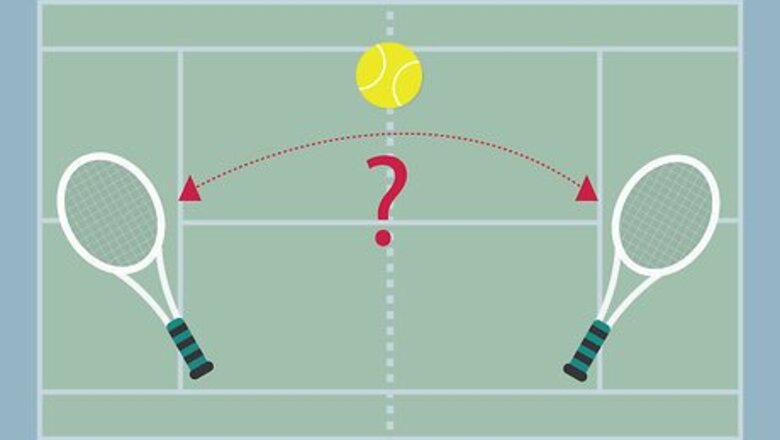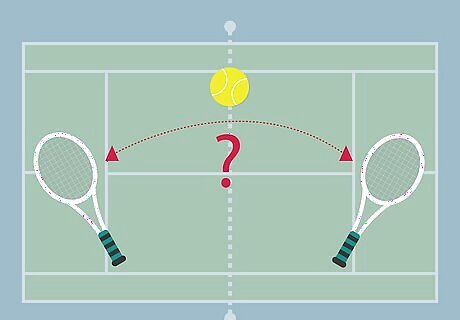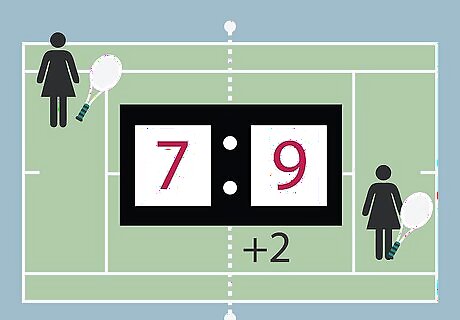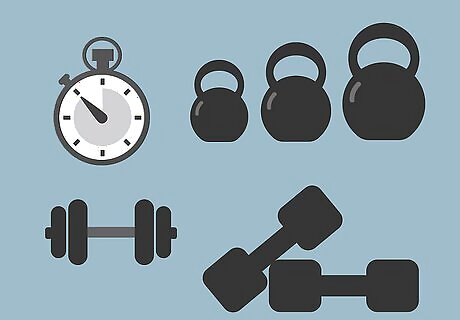
views
Serving in a Tiebreaker

Decide who goes first. In regular games, the server switches at the end of each game. In a tiebreaker, the person who served first in the set always serves first. Just like in a normal tennis game, the first service will be from the deuce (right) side of the of the hash. Unlike a regular tennis game, the first server in a tiebreaker will only serve one point. In normal tennis games, only one person serves throughout the game.

Alternate servers. After the first player serves one point, the second server will serve two points. For the rest of the tiebreaker, each server will serve two points at a time. Remember that you will change servers after every serve where the total score is odd. If the score is four to three, then you would change servers because the total number of points is seven, an odd number. If the score is four to two, then the server would have one more serve because the total number of points is six, an even number.

Serve from the advantage (left) side of the hash. After the first serve in the tiebreaker, each player will perform the first of their two serves from the left side of the hash. In normal tennis games, you always serve first from the right side of the hash so it may feel a bit awkward to switch it up in the tiebreaker. An easy way to remember this is that every even point will be served from the advantage side of the court. For example, if the score is four to three and you are serving the eighth point in the game, then you will serve it from the left side of the court.

Hit your second serve from the deuce side of the court. After you serve from the left side of the hash, you will move to the right side of the hash to perform your second serve. The exception to this rule is of course that the very first point in the tiebreaker is also served from the deuce side of the court. Every time you serve an odd point, you will serve it from the right side of the court. For example, if the score is three to three and you are serving the seventh point in the game, then you will serve it from the right side of the court.
Switching Sides in a Tiebreaker

Keep your side at the beginning of the tiebreaker. In tennis, players only switch sides at the end of odd numbered games in a set. The tiebreaker is technically the thirteenth game in a set so both players will remain on the same side of the court they were on for the twelfth game. In normal tennis games you would switch sides after the first game, the third game, the fifth game and after any other odd numbered games.

Change sides after every six points. In normal tennis games, players keep their side for the entirety of the game. In tiebreakers however, players will alternate sides after every point where the total score is a multiple of six. Switching sides during the tiebreaker keeps everything fair. One side of the court may be at a disadvantage, especially if you’re playing outside. If the score is five to one, then the total score of the game is six and the players would have to alternate sides. Some examples of disadvantage you may have on a particular side of a court include: the glare from the sun, the wind blowing in your face and the blinding lights at the venue.

Switch sides in the middle of your service set. Because players change sides of the court at the end of an even number of points (six) and servers alternate after odd numbered points, whoever was serving before the side switch will serve their second serve after the side switch. In normal tennis games, the side switch occurs at the beginning of a new game so there is always a new server.

Trade sides after the tiebreaker. If there is another set after the tiebreaker, the players will start the first game of the new set on the opposite ends of the court from where they ended up in the tiebreaker. If the score of the tiebreaker is seven to two, the players will switch sides for the next game even though there has only been three serves since the last side change. Most professional organizations worldwide don’t allow tiebreakers to be played in the final set of a match so there will always be a new set after a tiebreaker. The U.S. Tennis Association is one of the only worldwide tennis organizations that does allow tiebreakers to be played in the final set of a match.
Winning the Tiebreaker

Be the first to score seven points. You only have to score four points in order to win a normal tennis game. In a tiebreaker however, you have to score seven points to achieve victory. The way points are counted in a tiebreaker is also different from the way they are counted in a normal tennis game. In a normal tennis game points are counted as: love (zero), 15 (one), 30 (two) and 40 (three). In a tiebreaker points are simply counted as: one, two, three, four and so on.

Win by two. Just like a normal game of tennis, you must attain a two point advantage over your opponent to win the tiebreaker. The game will continue as long as it takes for one player gain a two point lead over the other. If the score is seven to six, the player with six points has one more chance to even the score up.

Be aggressive. Tiebreakers are mental and can be high-stress situations. You may be tempted to play it safe, but you’ll likely be more successful going into attack mode. Keep the intensity of your serves and be unpredictable. Try to get off to an early lead by getting in your opponent's head. For example: If both you and your opponent are right handed, then it would be safer to serve the ball down the middle of the court so they’d have to return it using their backhand. However, they might be caught off guard if you serve towards their stronger forehand. Tiebreakers are often decided by mental errors. Force your opponent to make mistakes by making it impossible for them to know where you’ll hit the ball next.

Get in shape. If you and your opponent are evenly matched, then a tiebreaker can last for a long time. The game can go back and forth a number of times before one player finally earns a two point advantage. Make sure to do plenty of cardio to build your endurance. The last thing you want to do is run out of steam in the middle of a close match. Basic cardio exercises like jogging will help you build your general stamina but tennis is a sport that requires quick bursts of energy. Be sure to do drills that help your body build endurance specifically for tennis. Do mirror drills. One partner runs up court, down court and shuffles side to side while calling out where they’re moving. A partner on the other end of the court does their best to mirror the first partners motions. If the first partner says “left” then he’d shuffle to the left of the court and the other partner would shuffle to his right. Switch partners after sixty seconds and do this drill at least five times. Do side to side drills. A feeder hits one ball to the left side of the court, one to the middle, one to the right and then back again. A runner tries to chase down and return each ball. Each player should be runner for about five minutes. The feeder should have quite a few extra balls so the drill can run smoothly.




















Comments
0 comment